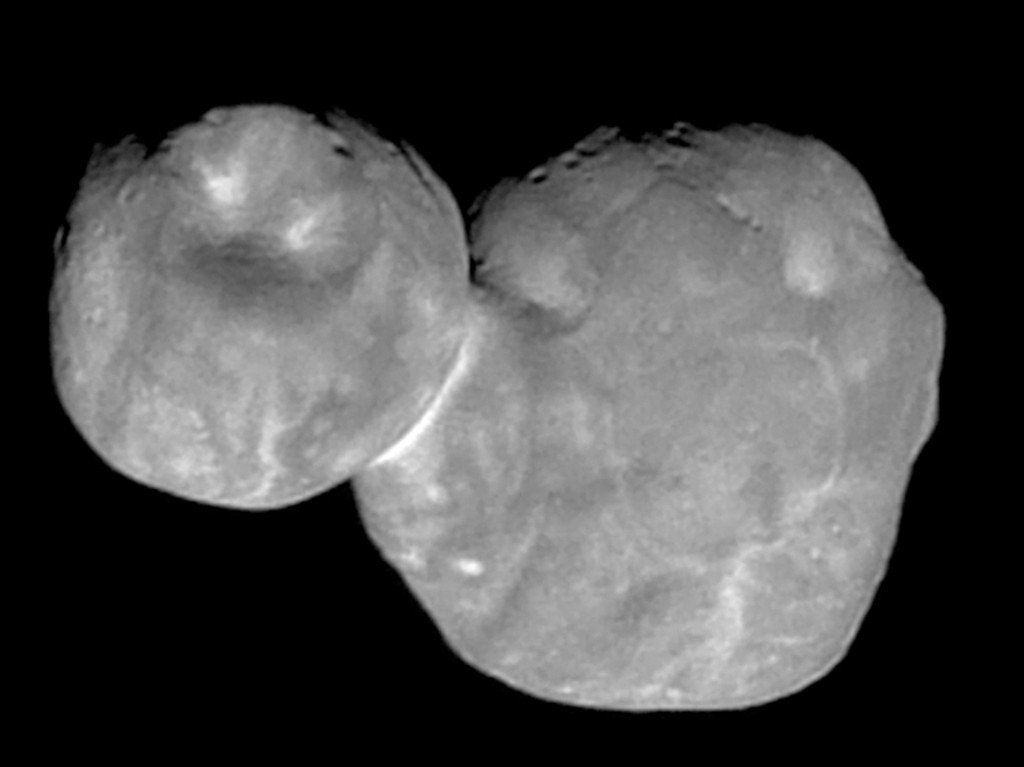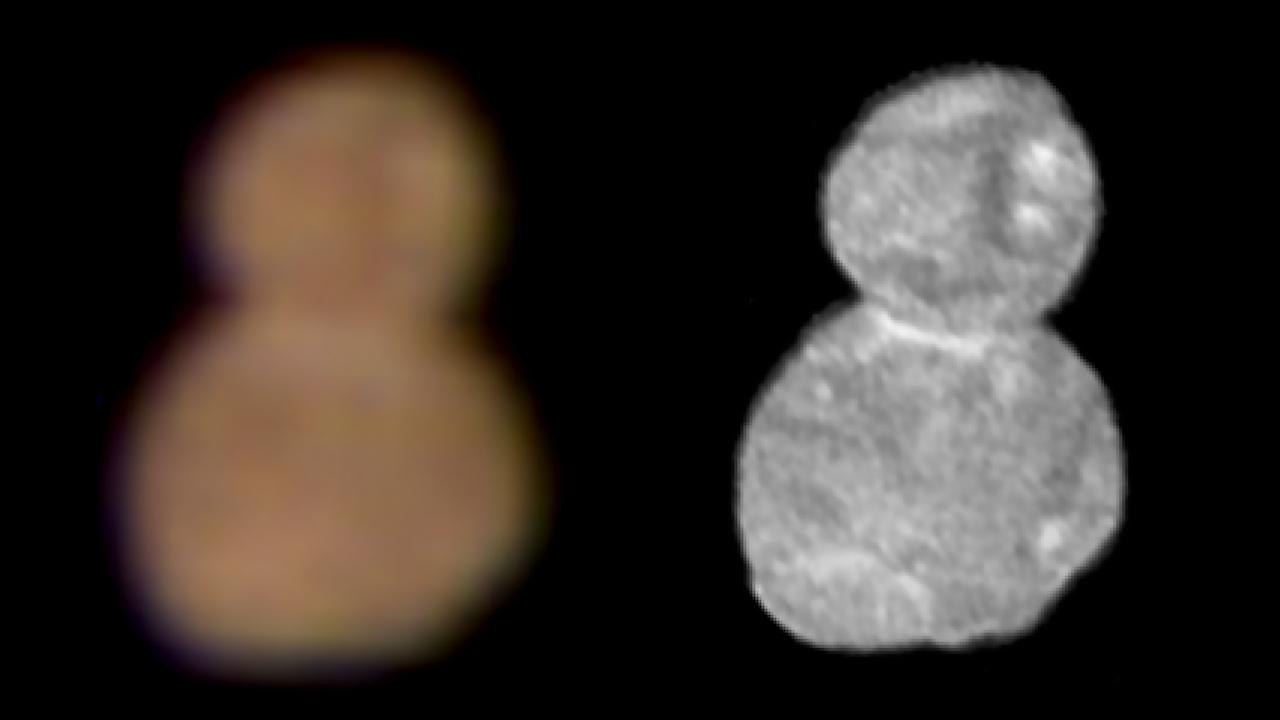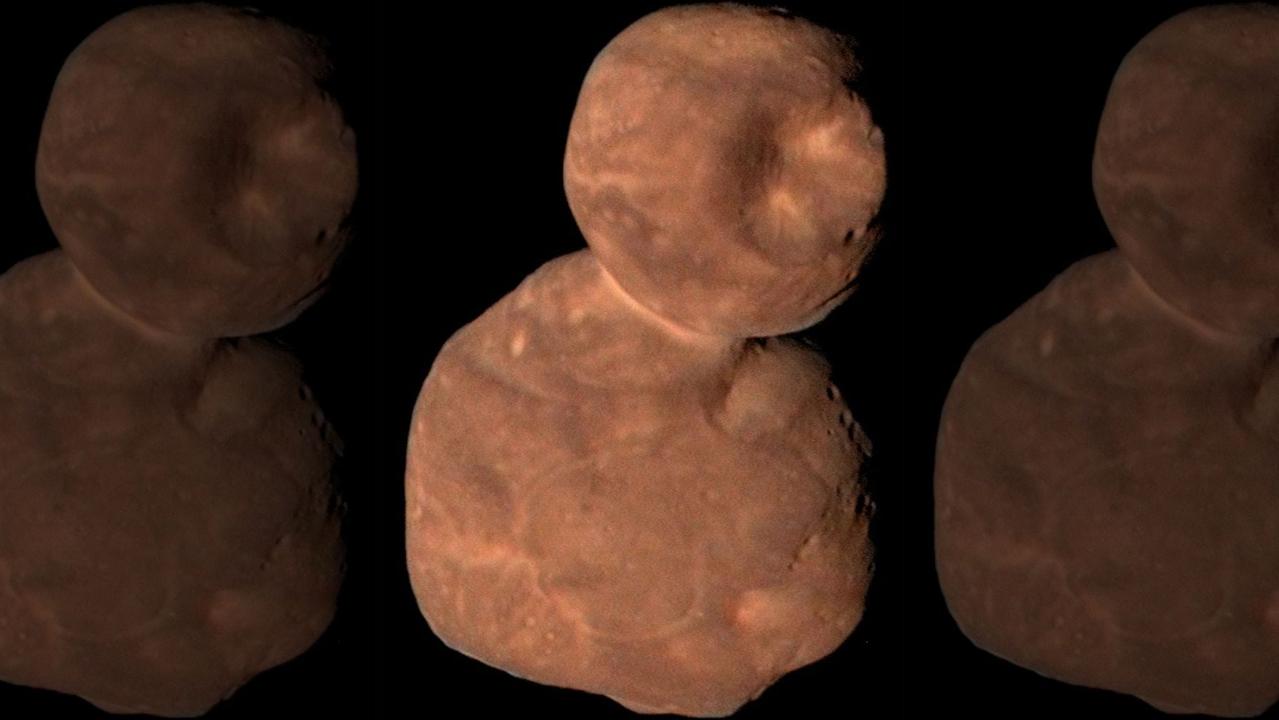NASA renames ice world after Nazi-link backlash
NASA has quietly changed the name of the farthest cosmic body ever visited by a spacecraft after backlash over its connotations.
The farthest cosmic body ever visited by a spacecraft has been renamed after backlash over the previous name’s Nazi connotations.
The ice rock, previously known as Ultima Thule, orbits in the Kuiper Belt about 6.4 billion kilometres from Earth. It has been renamed Arrokoth.
NASA’s New Horizons spacecraft made an epic fly-by of the recently unveiled fossil from the beginning of the solar system early this year.
The technical name for the rock is 2014 MU69, but New Horizons dubbed it Ultima Thule.
According to Phys Org, the name sparked an angry reaction because it was used by far-right German occultists in the early 20th century as the fabled ancestral home of “Aryan” people.

The term was used as a self-designation by Indo-Aryan people of the Vedic period in India — but was later co-opted with a darker purpose by Nazi Germany.
“Thule was one of the names they gave to what they believed was the ancient Aryan homeland, a prehistoric Aryan utopia that collapsed because of racial miscegenation or a flood or what have you,” Eric Kurlander, a professor of history at Stetson University, told the New York Times.
“This isn’t just some obscure element among hundreds of others in the Nazi cosmology.
“They named a tank division after Thule in World War II.
“It keeps popping up, which is why it probably makes sense not to name something that anyone has any interest in Thule. It has too much baggage as this point.”
Members of Thule Society reportedly founded a political party that evolved into Adolf Hitler’s Nazi party. The term is popular in alt-right circles.
It’s also the name of a Swedish white-power rock group.
So how did it become the name of the space rock?
Newsweek reports the New Horizons team knew about the term’s Nazi connotation during the naming process but decided to name it that anyway.
“The term, Ultima Thule, which is very old, many centuries old, possibly a thousand years old, is a wonderful meme for exploration, and that’s why we chose it,” lead scientist Dr Alan Stern told reporters at the time. “Just because some bad guys once liked that term, we’re not going to let them hijack it.”
The New Horizons team chose the new name, and it was ratified by the International Astronomical Union and its Minor Planet Centre.
NASA revealed the new name at a ceremony but made no mention of the controversy.
Arrokoth means “sky” in the language of the Native American Powhatan people, NASA said on Tuesday.


“The name ‘Arrokoth’ reflects the inspiration of looking to the skies and wondering about the stars and worlds beyond our own,” Dr Stern said in a statement.
NASA said the name was picked because of the Powhatan’s ties to the Chesapeake Bay region.
The New Horizons team got consent for the name from Powhatan Tribal elders and representatives, according to NASA.
Arrokoth is notable for its strange shape. The rust-coloured object is composed of two connected spherical lobes and measures just 33km across at its widest point
New Horizons is operated from Johns Hopkins University’s Applied Physics Lab in Laurel, Maryland.
The Hubble Space Telescope — which discovered Arrokoth in 2014 — has its science operations in Baltimore.
Arrokoth is among countless objects in the so-called Kuiper Belt or vast Twilight Zone beyond the orbit of Neptune.
New Horizons will observe some of these objects from afar as it makes its way deeper into space.
– With AP




